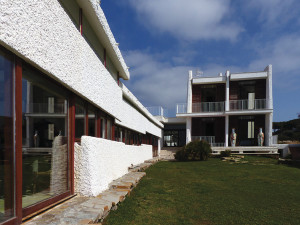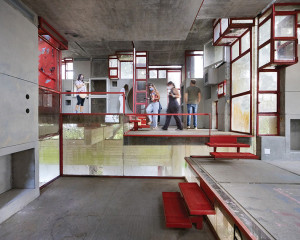A HOUSE IN ELBA ISLAND
Living into Nature
Gianni Pettena
This small ruin was almost completely concealed by brambles. I actually discovered it by accident and fortunately managed to purchase it in 1975. Directly involved in the adventure of reconstruction, I visited often to control the works, often unconsciously “marking” the territory, like any animal. In this place I sought to create space for myself without disturbing, to slow down my rhythm, to observe, listen, learn from nature. This gradually permitted me to create a space also for myself, without destroying anything. I could speak, more than of a work of minimal architecture, of an architecture that was lived, learned, and in which context commanded and taught. Similar to a diary that uses a visual language, the house continued to be modified; it maintains the memory of its origins and I now feel it has finally taken on its more or less definitive appearance. Made of stone, glass and wood, almost entirely local, the house is a concatenation of open environments and small enclosed spaces, a co-construction by man and nature, that allows vegetation to enter: almost a utopia made reality that has acquired its own architectural value the more the environment assumed a central role. Over the course of the years contributions have been added by such friends as Ettore Sottsass, Alessandro Mendini, Nigel Coates, Lapo Binazzi, Ugo Marano who have contributed to making this place so particular. Ettore Sottsass gifted to me and the house his last work, a wall and a fireplace; the wall beside it is designed by Alessandro Mendini with a mosaic at its centre; two tables, one inside and one outside, are by Ugo Marano, who enriched these objects-furnishings with mosaics and ceramics. Andrea Branzi designed a weather vane on the roof, Lapo Binazzi a clothes hanger Nigel Coates a table and Marco Pace a bathroom. More than a project curated by me, I wished to add an additional “flavour” to the house through interventions by my friends, traveling companions that would demonstrate their understanding of the significance of dwelling in this place.









